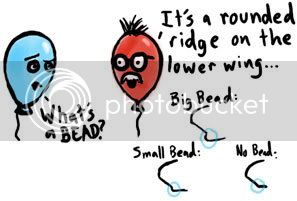Star Shark
* Ace Member *
a set of 3 would be good...
Aviar/Magnet/Pure
Roc/Buzz/Core
Leopard/XL/River
Aviar/Magnet/Pure
Roc/Buzz/Core
Leopard/XL/River
Discover new ways to elevate your game with the updated DGCourseReview app!
It's entirely free and enhanced with features shaped by user feedback to ensure your best experience on the course. (App Store or Google Play)
What does the J in Millenium's JLS stand for?
Disc will always become less stable over time. An overstable disc will start to flip easier for you and go longer. Understable disc will keep beating in to the point where if you just look at it wrong the disc will start to turn over. Different plastics will beat in at different rates.
Good question. :thmbup:
Flipping a disc usually means the disc's stability threshold has been broken and it's trajectory is actively moving away from the disc's natural tendency. RHBH a disc will naturally fade left unless it's stability threshold has been reached, in which case the disc is flipped and it will turn right.
This flip can be short lived allowing the natural hyzer fade left to take over again. Conversely a disc can be flipped so severly that it may show little or none of it's natural left turn. Flipping a disc is also associated with glide, and controlled use of this energy is what allows for the remarkable glide some pros can achieve.
exactly right...of course you need to account for differences in your abilities.
What does the J in Millenium's JLS stand for?
Nobody knows? I win the noob thread?
Beads on discs: what are they and what do they do? Visuals would be appreciated (big bead vs small bead vs no bead examples)
Beads on discs: what are they and what do they do? Visuals would be appreciated (big bead vs small bead vs no bead examples)

Click me for visuals.
Basically, it's extra plastic on the bottom of discs that creates drag/stability. The bigger the bead, the more overstable a disc is presumed to be.
Honestly, I'm not sure if it stands for anything. It may very well be "Just Long and Straight" like MrFixit says. I have no idear.